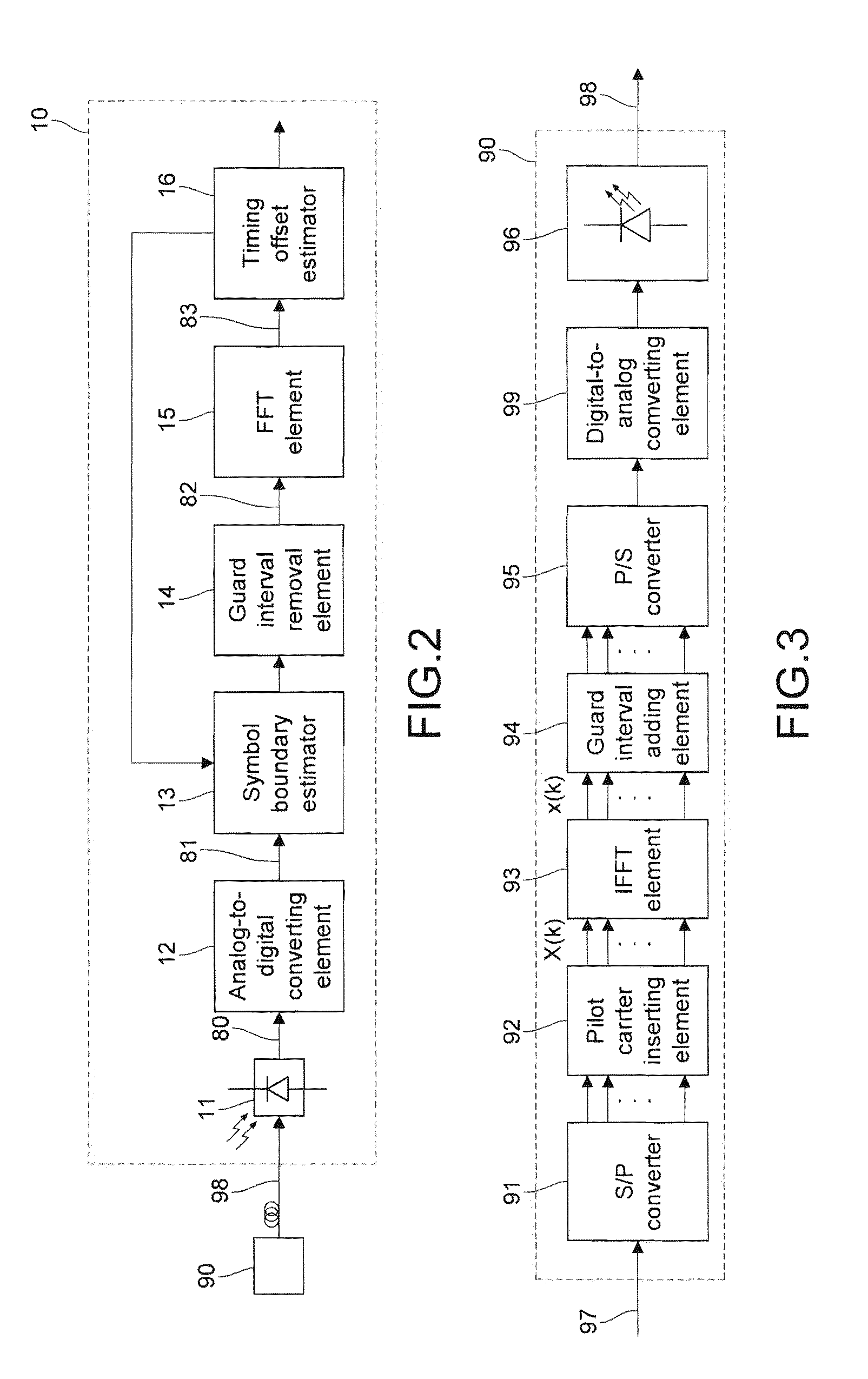Method for receiving optical orthogonal frequency-division multiplexing signal and receiver thereof
a frequency-division multiplexing and optical orthogonal technology, applied in multiplex communication, code conversion, instruments, etc., can solve the problems of synchronization problem between channels, common problems of ofdm technique, time-spreading and inter-symbolic interference (isi), etc., to shorten the time occupied, the effect of reducing the time occupied
- Summary
- Abstract
- Description
- Claims
- Application Information
AI Technical Summary
Benefits of technology
Problems solved by technology
Method used
Image
Examples
Embodiment Construction
[0033]FIG. 2 is a schematic architectural view of a receiving end of an optical OFDM system according to the present invention. Referring to FIG. 2, the signal receiving method of the present invention is applicable to an optical OFDM receiver 10. The receiver 10 receives an optical signal 98 emitted by an optical OFDM emitter 90. The receiver 10 comprises an optical-to-electrical converting element 11, an analog-to-digital converting element 12, a symbol boundary estimator 13, a guard interval removal element 14, an FFT element 15, and a timing offset estimator 16.
[0034]The manner of generating the optical signal 98 by the emitter 90 can be obtained with reference to FIG. 3, and FIG. 3 is a schematic architectural view of an emitting end of the optical OFDM system according to the present invention. As shown in FIG. 3, the emitting end (that is, the emitter 90) comprises a serial to parallel (S / P) converter 91, a pilot carrier inserting element 92, an inverse FFT (IFFT) element 93,...
PUM
 Login to View More
Login to View More Abstract
Description
Claims
Application Information
 Login to View More
Login to View More - R&D
- Intellectual Property
- Life Sciences
- Materials
- Tech Scout
- Unparalleled Data Quality
- Higher Quality Content
- 60% Fewer Hallucinations
Browse by: Latest US Patents, China's latest patents, Technical Efficacy Thesaurus, Application Domain, Technology Topic, Popular Technical Reports.
© 2025 PatSnap. All rights reserved.Legal|Privacy policy|Modern Slavery Act Transparency Statement|Sitemap|About US| Contact US: help@patsnap.com



